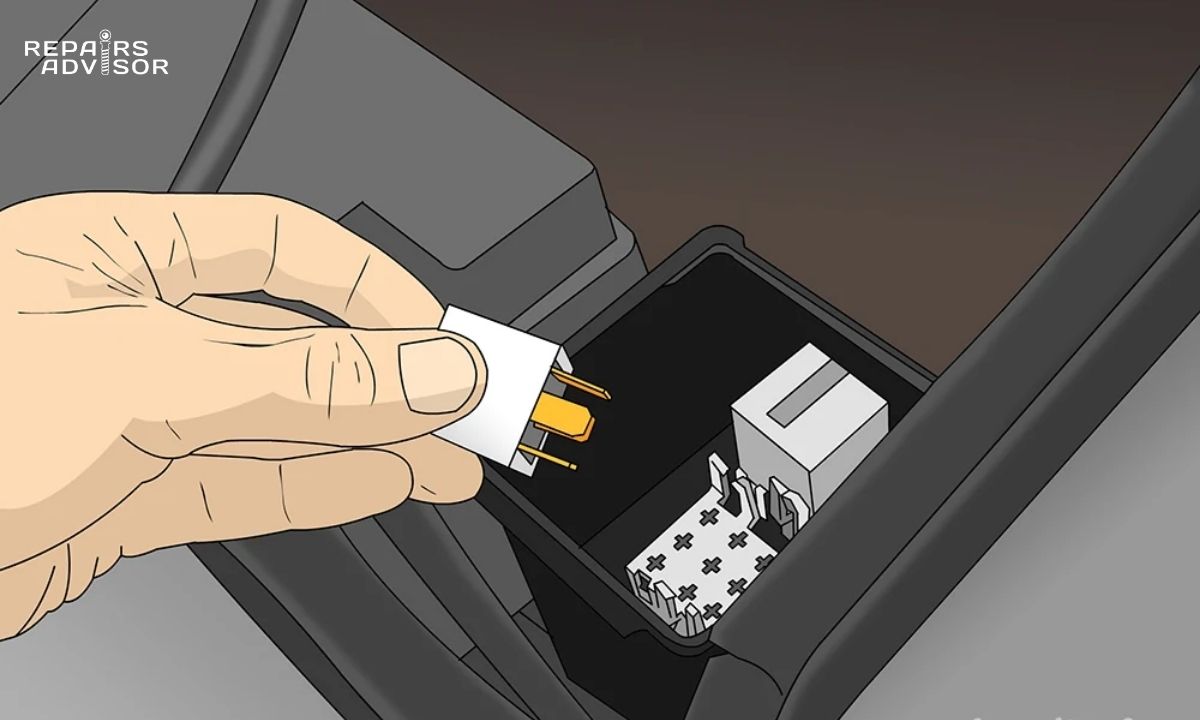That refreshing blast of cold air on a hot day feels amazing, right? Well, a small but mighty component called the air conditioner (A/C) relay plays a crucial role in making that happen. Think of it as the dedicated “power switch” for your A/C system. When you hit that “A/C” button in your car, this relay gets the signal and instantly sends electrical power to your A/C compressor and its clutch, kicking the cooling process into gear. It operates just like any other relay, reliably connecting the electrical current when needed.
But what happens when this essential relay starts to falter? Your cool comfort can quickly turn into a sweaty mess!
Key Signs Your A/C Relay Is Giving Up
When your A/C relay wears out or fails, your climate control system can start acting strangely:
- A/C Compressor Works Intermittently (On and Off Randomly):
- This is a tell-tale sign that your relay is on its last legs. As the internal electrical contacts of the relay wear down, they might not make a consistently good connection. This means your A/C compressor might turn on and off at random intervals, giving you bursts of cold air followed by warm air, completely unpredictably. It’s frustrating because it sometimes works, making you wonder what’s really going on!
- Vents Blow Only Warm Air:
- You hit the A/C button, but all you get is a lukewarm breeze. While many things can cause this (like low refrigerant or a bad compressor), a failed A/C relay is definitely a possibility. If the relay isn’t sending power to the A/C compressor, it simply won’t engage.
- A key clue here is the absence of the normal “click” sound you usually hear when turning on your A/C. That click is often the relay engaging, so no click could mean no power is getting through.
- No A/C Operation at All:
- In more severe cases of relay failure, the A/C system might just be completely dead. No cold air, no compressor engagement – nothing. It’s as if the “power switch” has been permanently turned off.
- A Blinking A/C Light:
- While a blinking A/C light often signals a general problem with the air conditioning system, it usually doesn’t specifically indicate a failed relay. It’s more of a universal “something’s wrong with the A/C” warning that requires further diagnosis.
How to Diagnose and Fix a Bad A/C Relay
Thinking about just swapping out the relay because it’s “cheap and easy”? Hold on! That can often lead to wasted time and money if it’s not the real culprit. Proper diagnosis is key!
- Don’t Just Replace It Blindly – Test First!
- Even if you suspect the relay has failed, it’s crucial to test it before replacing it. A common misconception is: “If the relay clicks, it must be good.” Not true! A click only means the relay is receiving an electrical signal to engage. It doesn’t guarantee that the internal contacts are actually routing power through to the compressor. A seemingly “good” clicking relay could still be faulty internally and not allow power to flow.
- Professional Testing Methods:
- A technician will use a multimeter to check for continuity across the relay’s contacts when it’s activated, verifying that power can actually pass through.
- They might also swap the A/C relay with another identical relay from a non-critical system in the vehicle (like the horn relay, if applicable) to see if the A/C then works or if the other system fails. This simple test can quickly confirm if the relay is the problem.
- Consider Other A/C System Controls:
- Remember, the A/C relay isn’t the only component that can prevent your compressor from turning on. Several other switches and sensors can interrupt the signal to the A/C compressor, including:
- Low/High Pressure Switches: These prevent the system from running if refrigerant pressure is too low (protecting the compressor) or too high (preventing damage).
- Thermostats/Temperature Sensors: If the system thinks the evaporator is too cold (risk of freezing), it might disengage the compressor.
- Engine Control Module (ECM): The ECM can temporarily shut off the A/C compressor to prioritize engine performance (e.g., during wide-open throttle) or to prevent engine overheating.
- This is another crucial reason why diagnosing the issue properly before buying parts is essential.
- Remember, the A/C relay isn’t the only component that can prevent your compressor from turning on. Several other switches and sensors can interrupt the signal to the A/C compressor, including:
- Modern A/C Systems (Variable Compressors):
- It’s important to note that many newer vehicles (especially those with A/C compressor control valves) operate differently. Their A/C compressor is always running when the A/C is on, and they do not use a traditional A/C relay to engage/disengage the clutch. Instead, the amount of cooling the compressor does is continuously varied and moderated by an internal compressor control valve, which is managed by the engine control module based on demand. If you have this type of system, a “bad relay” isn’t even a possibility!
Your Repair Advisor’s Take:
Your A/C relay is a small electrical worker bee that’s vital for keeping you cool. When it acts up, you’ll feel it immediately! While the symptoms can be frustrating, rushing to replace the relay without proper testing can easily lead to a bigger headache and wasted money.
Don’t let a simple click fool you or throw parts at the problem! The A/C system is complex, and many components work together.
For accurate diagnosis and a lasting solution to your A/C woes, always consult a qualified automotive technician. They have the right tools and expertise to pinpoint whether it’s truly the relay, a pressure switch, a wiring issue, or something else entirely. Get back to enjoying that perfectly chilled air; let’s schedule a professional A/C system diagnostic today!
